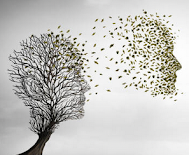Sharon Hewitt Rawlette writes in her essay, Beyond Death: The Best Evidence for the Survival of Human Consciousness—A final important point regarding paranormal perception during NDEs is that about a third of those NDErs who report experiencing a life review recall that that review contained visions of future as well as past life events, and at least some of those future events have then taken place, even when they were still 20 or 30 years in the future at the time of the NDE. In a case reported to Kenneth Ring, a 10-year-old had an NDE in which he received the information “You will be married at age twenty-eight” and “You will have two children.” Eighteen years later, during the year following his twenty-eighth birthday, he met and married his spouse, and they went on to have two children.
A related phenomenon is that NDErs sometimes report meeting their future children during their NDEs and/or meeting the future children of other people. I’m not aware of any cases that provide strong objective verification of this beyond the fact that, when these children are born, the NDErs recognize them as the ones they saw in their NDE, but the mere fact that NDErs report these interactions with future children dovetails with memories some children have of a pre-birth existence, memories we’ll explore in the sections Memories of a Previous Life and Memories of the Intermission Period Between Lives.
Shared Death Experiences
Yet another strike against the “hallucination of a dying brain” explanation for NDEs and a point in favor of their portraying objective aspects of reality is the fact that near-death experiences can often be shared by others. Sometimes these are other people who are near death at the same time, but generally they’re perfectly healthy people. Often the shared death experience happens when they’re in the same room with the dying, but if there’s a strong emotional bond, they may share the dying experience even at a distance. The experience generally includes one or more typical NDE elements: floating out of the body, seeing the deceased loved ones of the dying person, encountering a light, even sharing in the dying person’s life review.
Dr. Raymond Moody, who is famous for popularizing NDEs with his 1975 bestselling book Life After Life, in 2010 co-wrote a book called Glimpses of Eternity that is dedicated to this related phenomenon of shared death experiences. Moody reports that, in giving lectures around the world, he has found that 5-10% of the members of his audiences have had a shared death experience, which is only slightly less than the percentage of his audience members who’ve had NDEs.
An especially evidential aspect of shared death experiences is the fact that, just like apparitions and dreams of the deceased, they sometimes happen simultaneously to multiple living people present at a death. For instance, Moody relates the experience of four siblings and a sibling-in-law who all perceived some of the same extraordinary phenomena while they were gathered around their dying mother. At first, all they saw was a bright, unearthly light, but just after their mother took her last breath, vivid, cloud-like lights gathered and formed themselves into a bridge-shaped entrance way. The children then saw their mother come out of her body and go through this portal. It was a joyful experience for them, and one of them even heard “beautiful music,” though the rest did not.
In another multiply shared death experience, two sisters who were by their mother’s side as she was dying of lung cancer saw the room start to swirl. When it stopped, they found themselves standing beside a much younger version of their mother and started to see scenes from her life. Many of them were from before the girls were born—like their mom’s first boyfriend and her heart-breaking breakup. They even discovered more recent events they’d known nothing about, like the fact that their mother had a crush on her widowed neighbor. One of the sisters says, “What we saw was so real that we thought we had died too. For months it was beyond belief until we finally accepted it.”
The fact that multiple healthy individuals can perceive NDE phenomena as someone is dying shows that these phenomena are not mere side effects of drugs or physiological changes that occur as the brain shuts down. They appear instead to be real events that nevertheless can’t be perceived by everyone.
Sharon Hewitt Rawlette has a PhD in philosophy from New York University and writes about consciousness, parapsychology, and spirituality for both academic and popular audiences. She lives in rural Virginia. She received an award from the Bigelow Institute for Consciousness Studies for her essay “Beyond Death: The Best Evidence for the Survival of Human Consciousness,” available at https://bigelowinstitute.org/contest_winners3.php. Footnotes in the essay are not included in these excerpts.










